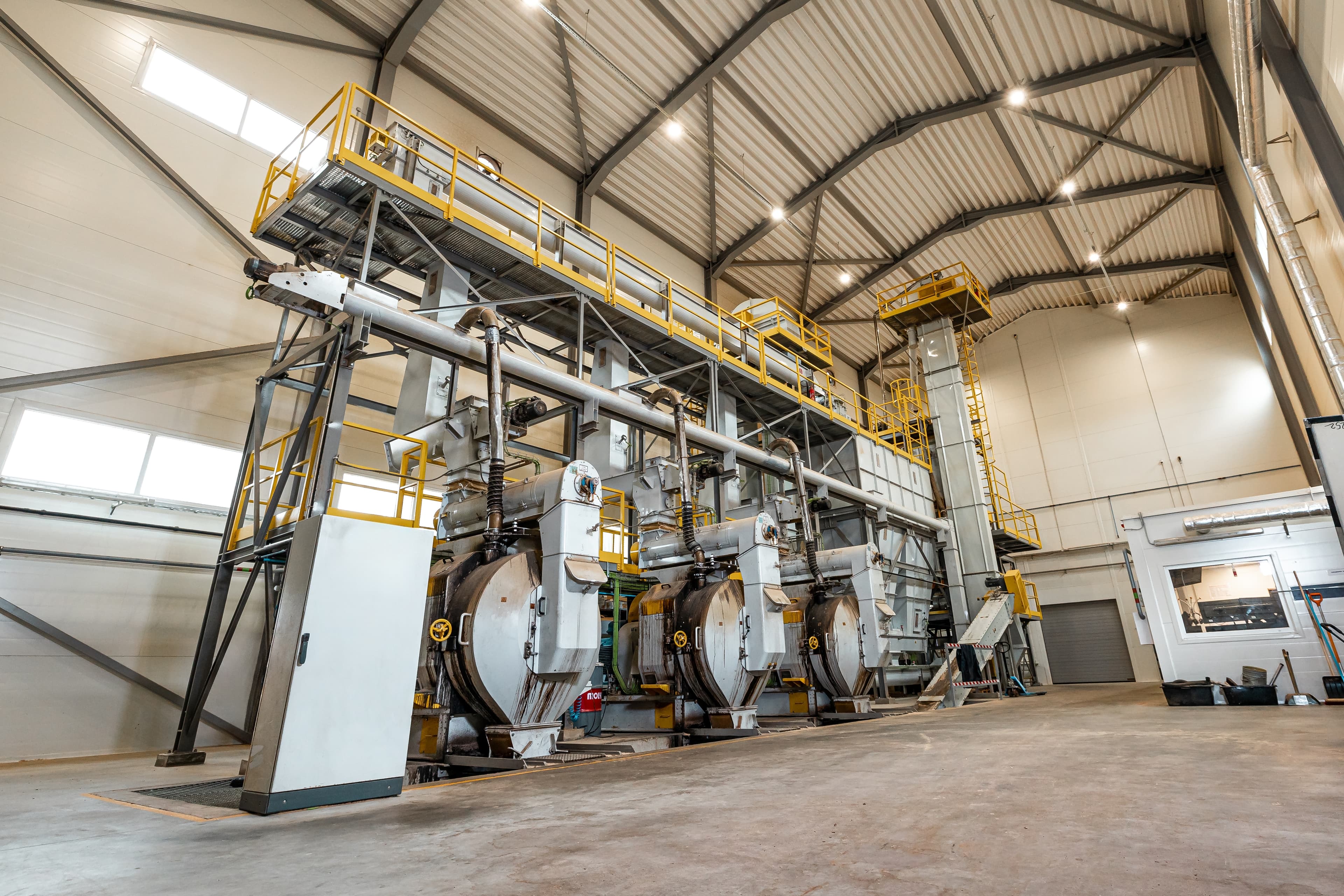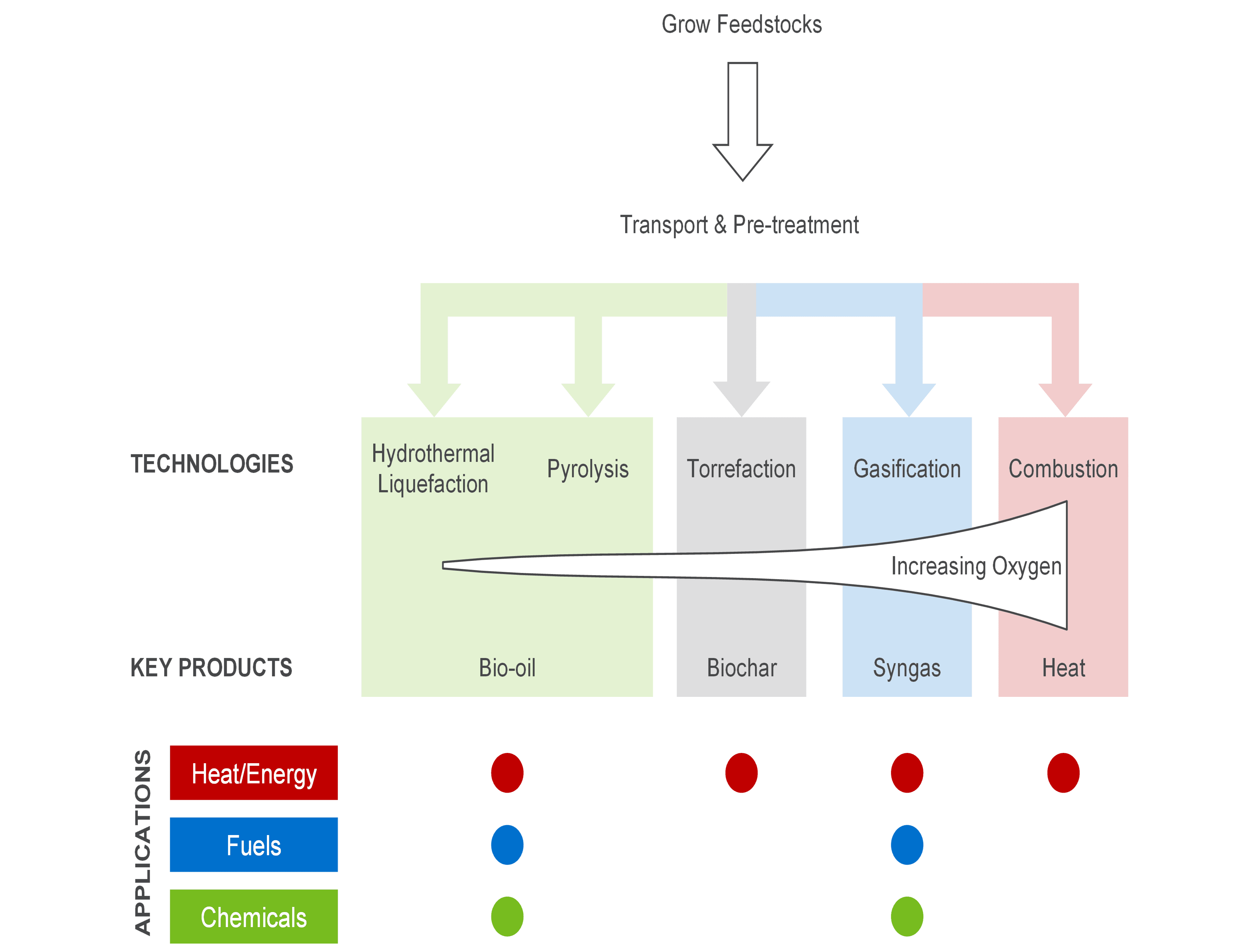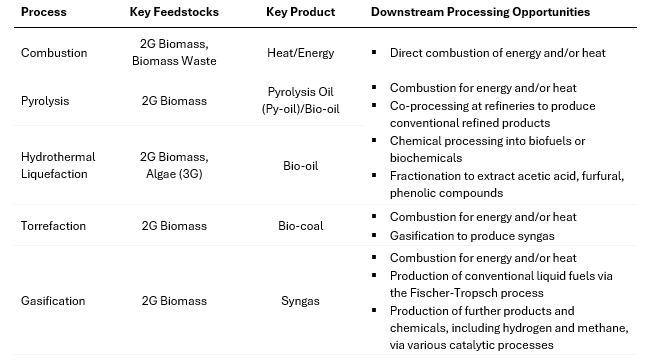Biomass pyrolysis: Hot topic - literally - the focus of a new BI report

The global energy landscape is at a crossroads. With fossil fuel reserves dwindling and climate change accelerating, the need for sustainable, renewable energy sources has never been more urgent. Among one of the promising solutions are thermochemical conversion routes, a suite of processes that allows the transformation organic materials—such as agricultural residues, forestry waste, and other biomass—into valuable bio-based products, including bio-oil, biochar, and syngas. According to the International Energy Agency (IEA), renewable fuel is expected to account for nearly six percent of global energy demand from industry, buildings, and transport in 2030, playing a pivotal role in decarbonizing industries and reducing greenhouse gas emissions.
Thermochemical conversion encompasses several key processes: pyrolysis, gasification, torrefaction, and hydrothermal liquefaction (HTL). Each of these processes is distinguished by its operating conditions, such as temperature, pressure, and reaction environment, which determine the end products and their applications. For instance, pyrolysis operates in the absence of oxygen at moderate temperatures (typically 400–600°C), producing bio-oil as its primary product, while gasification involves higher temperatures (700–1200°C) with limited oxygen to generate syngas. Torrefaction, a mild form of pyrolysis, enhances biomass properties for energy applications, and HTL uses water at high pressures and temperatures to convert wet biomass into bio-crude.
Overview of Biomass Conversion into Thermochemical Energy Products

Among these processes, biomass pyrolysis stands out for its versatility and efficiency in producing bio-oil or pyrolysis oil, a liquid fuel that can directly replace petroleum-derived fuels in existing infrastructure. Unlike gasification, which primarily generates syngas, or torrefaction, which produces energy-dense solid biomass, pyrolysis uniquely yields a liquid product that is easier to store, transport, and integrate into current fuel systems. This makes pyrolysis a key enabler for a seamless transition to a low-carbon economy, particularly in sectors, such as transportation and industrial heating where liquid fuels remain indispensable.
Biomass Processing
Biomass conversion technologies are essential for producing value-added products from a wide range of feedstocks. These technologies typically fall within biological and thermochemical platforms, though many are limited by the types of biomasses they can process and the products they can generate. For example, crops like corn and sugarcane are primarily used for ethanol production, while fats and oils are converted into biodiesel or renewable diesel. Plant cellulose is commonly used to produce viscose rayon.
However, the focus is shifting toward next-generation (2G and 3G) biomass feedstocks, such as biomass waste and residues, rather than on-purpose crops. These feedstocks hold significant potential for more sustainable and diverse applications.
The most relevant biocoal and biocrude processes are combustion processes, such as hydrothermal carbonization pyrolysis, torrefaction, and hydrothermal liquefaction. • Although the fast or flash thermochemical pyrolysis process producing bio-oil is currently the only commercial biomass pyrolysis technology, there is significant attention and research dedicated to potential improvements to the process through the use of catalysts and/or hydrogen. Catalytic pyrolysis and hydropyrolysis technologies are still at pilot scale, though some are approaching or are currently in the process of commercialization. The main aim of these is to produce bio-oil with improved properties and finished products directly through pyrolysis:
Fast Pyrolysis: Fast or flash pyrolysis (FP) involves the thermochemical decomposition of organic materials at elevated temperatures (and generally atmospheric pressure) in the absence of oxygen. It generally consists of biomass heating in the absence of oxygen to temperatures of 300 to 600 °C, causing thermal decomposition of lignocellulosic biomass to many oxygenated fragments and producing solid biochar and pyrolysis gas.
Catalytic Pyrolysis: Catalytic pyrolysis (Catalytic Fast Pyrolysis, CFP) generally involves the use of a heterogeneous catalyst in the pyrolysis reactor. The reactor temperature is typically slightly higher than for thermochemical pyrolysis, ranging between 600 and 700 °C. The main aim of the catalyst is to remove oxygenated compounds, which improves bio-oil’s calorific value, lowers its viscosity and increases its stability. The removal of oxygen during the process also reduces the formation of acidic compounds, and increases bio-oil density, making it more suitable for transportation and storage. The typical yields of bio-oil through catalytic pyrolysis are lower than those obtained through fast or flash pyrolysis.
Hydropyrolysis: Hydropyrolysis is a catalytic pyrolysis process with the additional use of hydrogen in the pyrolysis reactor, which further helps to deoxygenate the pyrolysis gas product. After the removal of char, the pyrolysis gas can be condensed into a higher quality bio-oil than that achieved through fast/flash or catalytic pyrolysis, but the gas product can also undergo hydroconversion (again using hydrogen) to produce a liquid product stream consisting of finished biogasoline and biodiesel products, which can be separated via distillation and sold directly to the market without the need for further processing. The total yield of liquid products is similar to that observed in catalytic pyrolysis processes.
Hydrothermal Carbonization: Hydrothermal carbonization (HTC) is an induced coalification process that converts raw biomass into a coal-like product, called hydrochar, characterized by high carbon content and high calorific value. This type of thermo-chemical conversion, also referred to as wet pyrolysis (or wet torrefaction), can be applied to a variety of non-traditional sources such as the organic fraction of municipal solid waste, wet agricultural residues, sewage sludge, algae, and aquaculture residues. Indeed, unlike traditional dry pyrolysis, the HTC process allows for the treatment of substrates with elevated moisture content, up to 75 to 90 percent, without requiring a drying pre-treatment step.
Torrefaction: Torrefaction is a form of thermal treatment for conversion of biomass (generally cellulosic) to primarily bio-coal with some liquids and gases as byproducts, which takes place between 200 and 500 °C in the absence of oxygen. On average, the process results in mass losses and decreases in calorific value (20 percent and 10 percent, respectively) but yields a more homogeneous waste composition and leads to higher energy densities. The main product of torrefaction is bio-coal is a coal-like product with applications primarily in coal-fired utilities, cement production, combined heat, and power (CHP), and district heating. More than 150 torrefaction installations worldwide with a power generation ranging from 50 to 700 MWe have successfully tested the co-combustion of torrefied biomass. Bio-coal has additional applications in carbon sequestration, soil amendment, greenhouse growth media, filtration, or as a precursor to activated carbon. In these applications, this carbon-rich solid product is conventionally referred to as biochar; however, when it is tailored for value-added materials applications, it is referred to as biocarbon. NexantECA’s 2020 report, Biorenewable Insights: Biocoal and Biocrude, provides more information on biomass torrefaction and bio-coal.
Hydrothermal Liquefaction: Hydrothermal liquefaction (HTL) is a biomass to bio-liquid conversion route carried out in water in the form of supercritical steam at a moderate temperature of 280 to 370 °C and high pressures (10 to 25 MPa) in the presence of a catalyst. Bio-oil or biocrude is the main product along with gaseous, aqueous, and solid-phase byproducts. HTL technology can also be used to process plastic waste. HTL technologies have started to be commercialized by a few producers.
Given bio-oil's versatility as a renewable fuel, chemical feedstock, and its high-value applications in energy and industry, it is the most focused and promising product among biomass processing technologies.
Potential Products from Key 2G Biomass Processing Technologies

Find out more...
Biorenewable Insights: Biomass Pyrolysis (2025) - This report analyzes key biomass pyrolysis technologies for bio-oil production, focusing on commercially established and near-commercial processes. It covers feedstocks, process economics, carbon intensity, and capacity development, providing insights into the environmental impact and sustainability of these technologies. The report also explores the implications of these technologies on conventional energy, fuels, and chemicals markets.
Biorenewable Insights: Biomass Gasification (Coming Soon in 2025) - This report investigates the various developments in biomass gasification for chemical and energy. Several commercial technologies are analyzed in depth. Analyses include technical descriptions, carbon intensity, and cost of production estimates.
About Us - NexantECA, the Energy and Chemicals Advisory company is the leading advisor to the energy, refining, and chemical industries. Our clientele ranges from major oil and chemical companies, governments, investors, and financial institutions to regulators, development agencies, and law firms. Using a combination of business and technical expertise, with deep and broad understanding of markets, technologies, and economics, NexantECA provides solutions that our clients have relied upon for over 50 years.
Contact our team of industry experts